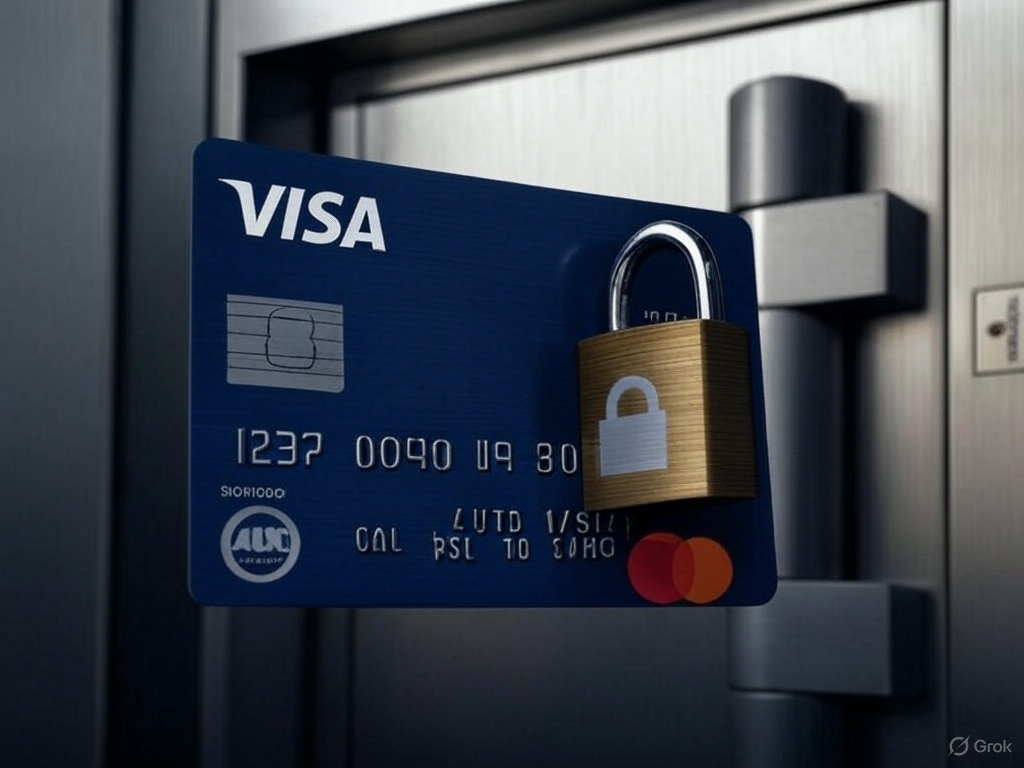Visa and Mastercard: Payment Cards, Not Transfer Tools
Banks often promote Visa and Mastercard as efficient tools for swift, seamless transactions. However, one critical feature is notably absent: the ability to transfer funds directly between cardholders. Unlike their standard role in point-of-sale purchases or online payments, these cards don’t support direct bank account transfers without involving a bank or third-party service—each step adding fees and complexity. Moreover, such transfers can take hours or even days to process, delaying even the simplest exchanges between users. This post examines the disconnect between the marketed capabilities of these cards and their real-world functionality.

How Banks Present Visa and Mastercard
Visa and Mastercard are widely promoted by financial institutions for their speed and ease of use. For example, Visa’s website highlights “fast, secure payments” accepted globally, while Mastercard emphasizes “convenient transactions” in its branding. Banks echo this, often advertising debit and credit cards as versatile tools for managing money. However, these claims primarily apply to payments—purchasing goods or services—not to transferring funds directly to another bank account.

In this post I hope to discuss the current situation regarding money transfer across card holders for US dollar accounts. I choose to use one currency to avoid making this post longer or more complex than it needs to be by avoiding a discussion on Foreign exchange services; that topic could be another post on its own.
Limitations of Direct Transfers
Visa and Mastercard operate as payment networks, facilitating transactions between cardholders and merchants across multiple banks and countries. According to Visa’s operational guidelines, their system processes over 200 billion transactions annually, almost entirely for payments, not interbank transfers. Direct transfers to bank accounts typically rely on systems like SWIFT (Society for Worldwide Interbank Financial Telecommunication) or ACH (Automated Clearing House), which these cards are not designed to access independently. As a result, cardholders cannot initiate a transfer to a bank account or card holder without additional steps.
Bank Involvement in Transfers
Most banks do not allow Visa or Mastercard to fund wire transfers directly. For most wire transfers, fees apply: domestic wire transfers average $25, while international ones range from $40 to $50, per Bankrate’s 2024 data. Additionally, if a card is used, banks may classify the transaction as a cash advance, incurring fees of 3%-5% (e.g., $15-$25 on a $500 transfer) and higher interest rates, often above 20% APR.

Market Gap and Emerging Solutions
The inability to easily transfer money from one person to another across banks has been recognized by several companies, leading to innovative solutions.
- In the US, Venmo processed over $244 billion in transactions in 2023 (Business of Apps), while Zelle handled 2.3 billion transactions worth $629 billion . Venmo also supports transactions by connecting Visa cards directly.
- Plaid facilitates seamless transfers by linking bank accounts to over 7,000 apps, as noted in their 2024 overview, however it may not support your bank of interest. From their page Plaid seems to provide transfer services for apps like Revolut and Wise.
- In Africa, mobile money platforms from telecom giants like MTN Mobile Money and M-Pesa have revolutionized peer-to-peer transfers, with M-Pesa alone boasting 51 million active users in Kenya moving $315 billion annually, per [Safaricom’s 2023 Annual Report] (https://www.safaricom.co.ke/images/Downloads/Safaricom_Annual_Report_2023.pdf).
These solutions leverage direct bank connections or mobile networks, offering faster and often cheaper alternatives to traditional bank transfers, addressing a gap Visa and Mastercard have yet to fill.
Personal note: I’ve used a mobile money wallet linked to my bank account, and it’s incredibly convenient. There’s usually no fee to move money between the bank and wallet, and sending cash to someone just requires their phone number—far easier than juggling Visa or Mastercard details, since most people know their phone number by heart. There is a fee to transfer between persons but it’s usually lower than those of a regular bank transfer. Zelle, operated by US banks, seems to have borrowed this idea, using a phone number or email to send money instantly. End note.
These solutions shine for in-country payments but hit a wall internationally, where the gap persists. Consider this: you’re at a conference in Nairobi, Kenya, and meet your favorite Belgian author. As a Singaporean fan, you’d love to send him $5 (6.68 SGD) as a small thank-you for inspiring you. Even though you both hold Visa cards, tools like Venmo, Zelle, or M-Pesa don’t offer a quick cross-border option—at least none I’ve come across. Instead, you’d have to exchange bank details, log into your banking app, face fees starting at $15 or more, and wait 2-3 days for that modest $5 to arrive. It’s little wonder your author might politely wave off the gesture—if only you had a $5 note to slip into his hand before he could protest.
The next section delves into third-party services that attempt to address this global hurdle.
Third-Party Services as an Alternative
Services like Wise, PayPal, and Venmo enable card-funded transfers to bank accounts, bridging the gap. This applies to cards that are not on the payment platform being used to initiate a payment. Wise, for example, charges 0.43%-1.0% plus a fixed fee (e.g., $4.14 for a $500 USD-to-USD transfer, per their March 2025 fee calculator). PayPal’s fee for card-funded transfers is 2.9% plus $0.30 per transaction domestically, with higher rates for international sends. However, banks may still apply cash advance fees, adding 3%-5% to the cost. These services process transfers via their own networks or SWIFT, not the Visa or Mastercard payment rails.
I’ve used Wise (formerly TransferWise) myself, and the fees can surprise you depending on your card. When I sent money from my USD Visa card—issued in Rwanda—to a US bank account, the cost shot from $26 to nearly $100 once Wise clocked the card’s origin. Skipping the issuing bank (though Wise feels bank-like itself) meant a higher fee than the $40-$50 I’d have paid for a traditional bank transfer. Worse, these services often lean on systems like SWIFT or WIRE, piling on extra charges that can outstrip standard bank rates.
Convenience? Not quite. Unlike mobile money or Zelle, where a phone number or email suffices, these platforms demand bank details—SWIFT codes, account numbers, addresses—that you have to exchange manually. You can’t just use the recipient’s Visa card number (ironic, since it’s their unique ID, but sharing it’s a security no-no). So you’re back to form-filling, waiting hours or days for the funds to land, and facing fees that sometimes dwarf traditional bank transfers.
Then there’s the direction issue. Take Remitly, for example: I’ve seen it happily send money from the US or UK to Ghana or Brazil, but try reversing that—say, from Ghana to the US—and you’re out of luck. I naively assumed remittances flowed both ways, but not here. It’s a one-way street that leaves you stranded if you’re on the “wrong” side.
Even if the charges were better than using a regular bank, many people might prefer not to hand their financial details to a 3rd party.
Why Transfers Differ from Payments
Payments via Visa or Mastercard use a closed-loop system: cardholder to merchant, processed instantly through the card network. Transfers, however, involve moving funds between accounts, often across banks or borders, requiring infrastructure like SWIFT (handling $5 trillion daily, per SWIFT’s 2024 report) or ACH (68.1 billion transactions in 2023, per Nacha). Cards lack direct access to these systems, limiting their role to payment initiation, not fund movement.

Key Takeaway
Visa and Mastercard excel as payment tools, processing billions of transactions yearly, but they are not built for direct bank account transfers. Banks and third-party providers enable such functionality, typically at a cost ranging from $5 to $50 per transfer, depending on the method and amount. Cardholders seeking to move money must navigate these additional layers, as the cards’ core design prioritizes payments over transfers.
PS: Apart from the charges mentioned here most banks charge a fixed amount for receiving funds via transfers with a card or SWIFT transfer. You might find the receiver short by 15 or 20 USD after you have already paid the charges. Yes, this applies even if the sender chooses to pay for the transfer charges. And yes sadly I was a victim of this.
Images in this post were generated by Grok from X AI